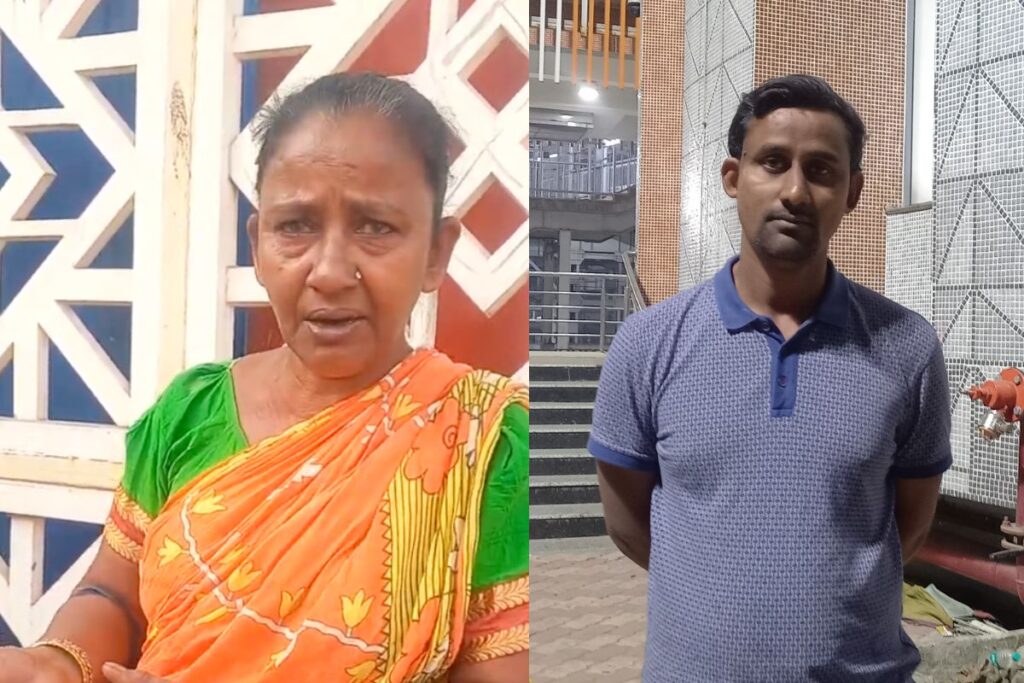Geeta Das has lived in the slums opposite a train station in the city of Kolkata, located in eastern India’s state of West Bengal, for over 40 years now. Last June, they received an intimation from the civic authorities that their homes would be razed down the next morning. They gathered as much of their belongings as they could before the eviction team arrived.
But how can one wrap up over four decades of life in a single night? — Geeta wondered aloud. Over 50 other families who stayed in the settlements with them hurried to gather all the stuff they could.
The next morning, the bulldozers arrived in the morning before they could gather all their essentials. “We could barely make time to take our belongings which we had painstakingly bought over the years. We could not even take our utensils,” said Geeta.
For the next few days, they stayed on the pavements before finally being able to make arrangements to relocate. Geeta lived there with her son, daughter-in-law who worked as a domestic worker in the area, and two granddaughters — aged nine, and eight years. Her daughter-in-law would eke a living as a domestic worker in the upscale neighbouring area, her granddaughters would go to a near-by school, and her son worked as an informal labourer.
Alternating between the pavements and railway platforms meant rough nights, and disturbed sleep. The young girls would doze off during their classes in the mornings. “We decided we needed to move for the sake of our daughters. We need to educate them, no matter what our situation is. They cannot have the same lives as us,” said Bishu Das, Geeta’s son.
In June last year, the West Bengal government conducted eviction drives across the city of Kolkata to do away with ‘encroachments’. Though the drives were put on hold after a few days, hundreds of vendors lost their shops, and hundreds more became homeless across different locations in the city.
The United Nations (UN) has termed homelessness as a ‘human rights violation’. Experts that Missing Perspectives spoke to talked about how homelessness leads to lack of dignity. According to the 2011 Census (the last Census conducted by the Indian government at time of publication), there are around 1.7 million people in homeless situations.
Lack of affordable housing, inadequacy of the law and slum demolitions and evictions without rehabilitation were among the key reasons for homelessness among women, according to a 2014 report ‘Violence and Violations: The Reality of Homeless Women in India’. Hearing Geeta’s story is a reminder that such issues can still significantly impact women in India today.

Kahkasha Shakil of civil society organisation Muktokantha Mahila Samity – which works for raising awareness of the homeless population – said, “Eviction has a direct bearing on the local population – they immediately lose access to livelihood opportunities because their work life is around the original site. It is the same with eviction of hawkers who live under the constant threat of the civic authorities.”
According to the UN, 1.6 billion people live in inadequate housing conditions globally, and around 15 million are forcefully evicted every year.
‘Due process not followed’
“If one can go to court before the eviction, then there is scope for court intervention if we can explain the urgency of the issue. But once the eviction happens, there is very little one can do. People are being evicted without the due process of law being followed. Often, civic authorities do not follow The Public Premises (Eviction of Unauthorised Occupants) Act, 1971 – they carry out demolitions and evictions without giving any prior notice or securing an eviction order as mandated by law,” said Kolkata-based human rights lawyer Purbayan Chakraborty.
“The urban homeless population does not have access to basic amenities like water, sanitation, drainage system and electricity connection. Their living condition is abysmal,” he added
Geeta’s family considers themselves lucky that they were in a slightly better financial situation — they moved to rent an accommodation in the slums of Maheshtala — around 10 km away from where they stayed earlier. “Our expenses have shot up. We have to pay a rent now, and spend on commuting.”
“Bishu’s hands are full these days — he wakes up early to take the train and drop his daughters to school. He then heads to his work on his bicycle. Soon it is time for him to go back to the school to pick up the girls and drop them at tuition classes.
“I then take the train again and drop them back home where my mother takes care of them. On most days, I return to the city again to work a few more hours. Around 7pm, my wife and I head back home together.”
But Bishu still considers himself lucky to be able to afford a rented home in the slums
Sangeeta Das, who was dwelling on the pavement four months after being evicted from the settlements said, “It is so distressing to stay on the pavements. We are cooking on the roads, our children are studying on the roads. What is this kind of life? It is difficult for us to relocate as our work is in and around this place.”
Staying on the pavements during the winters also meant an increasing frequency of falling sick. “Falling sick means extra expense or losing work days. Add to that the menace of mosquitoes. I am always scared for the safety of my children,” said Sangeeta.
Urban India suffers from severe housing poverty and inequality, research shows.
Sarika Nair, visiting faculty for public policy course at University of Mumbai, pointed out that evicting people is often a temporary solution adopted by civic authorities to invisibilise the homeless population, and those dwelling in slum settlements.
“The system doesn’t do enough to enable the urban poor to transition into living in decent homes. Shelters designed for the homeless population is also a temporary solution. Policies should look at how the homeless population can access basic documents to be able to apply for public housing schemes. Public housing schemes would mean moving towards ownership and land rights at some juncture,” she said.

